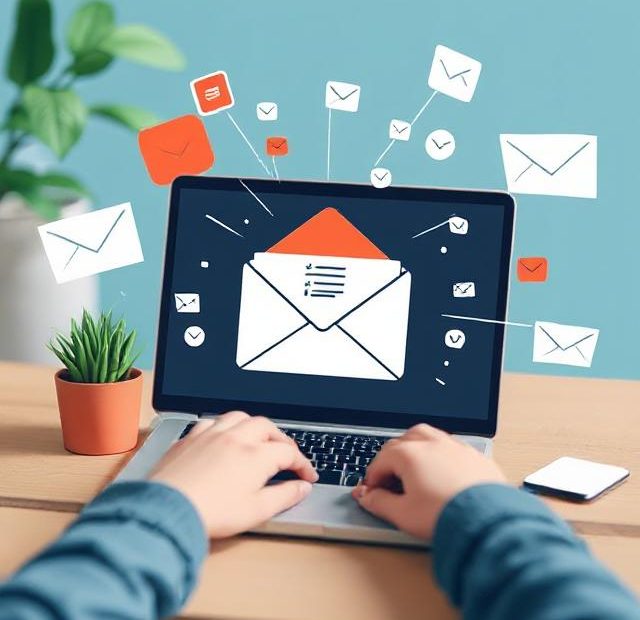You’ve crafted the perfect email campaign—engaging subject line, compelling content, and a clear CTA. You hit “send” with high hopes… but your email never makes it to the inbox. It’s either marked as spam or worse, never delivered at all.
Email deliverability issues are frustrating and costly. Whether you’re running a business, promoting an event, or nurturing leads, undelivered emails can mean lost opportunities and revenue. So, what should you do when your emails aren’t delivered?
This article walks you through the common causes, troubleshooting tips, and long-term strategies to fix and prevent email delivery failures.
Why Aren’t Your Emails Getting Delivered?
There are multiple reasons emails might not be delivered. Understanding the root cause is the first step to solving the issue. Here are the most common culprits:
1. You’re on a Blacklist
If your IP or domain is blacklisted by spam monitoring services, many inbox providers will block your emails outright.
2. High Bounce Rates
Sending to invalid or old email addresses can increase bounce rates, signaling to ISPs that your emails are unwanted or spammy.
3. Spam Triggers in Content
Using certain words or formatting (e.g., all caps, excessive punctuation, phrases like “Buy Now!”) can trip spam filters.
4. Missing Email Authentication
If your domain isn’t authenticated with SPF, DKIM, and DMARC records, ISPs are more likely to reject or junk your messages.
5. Poor Sender Reputation
Your email sending behavior—including frequency, engagement rates, and complaint rates—affects your sender score. A poor score results in delivery failures.
6. User Behavior
If too many recipients ignore your emails, delete them without reading, or mark them as spam, inbox providers will stop delivering your emails reliably.
Step-by-Step: What to Do When Your Emails Aren’t Delivered
Now let’s walk through a practical approach to troubleshoot and resolve your email deliverability issues.
✅ 1. Check Your Bounce and Complaint Rates
Go to your email service provider (ESP) dashboard and look at your bounce rate.
-
Hard bounces: Email address is invalid—remove these immediately.
-
Soft bounces: Temporary delivery failures—monitor and try resending.
Tip: Keep your bounce rate below 2% to maintain healthy deliverability.
✅ 2. Use an Email Deliverability Test Tool
Use tools like:
These tools will test your email for spammy content, authentication, and blacklisting. They’ll give you a score and suggestions to fix issues.
✅ 3. Authenticate Your Domain
This is a MUST if your emails are being filtered or blocked. Set up:
-
SPF (Sender Policy Framework) – Tells ISPs your sending servers are legit.
-
DKIM (DomainKeys Identified Mail) – Verifies email integrity and sender.
-
DMARC (Domain-based Message Authentication) – Protects against spoofing.
Most ESPs provide easy guides for setting up these DNS records.
✅ 4. Clean Your Email List
Remove:
-
Inactive users (no opens in 60–90 days)
-
Unsubscribed contacts
-
Fake or misspelled email addresses
Use list cleaning tools like: -
ZeroBounce
-
NeverBounce
-
BriteVerify
Why? A clean list improves engagement and reduces bounce/spam rates.
✅ 5. Avoid Spammy Language and Formatting
Avoid:
-
All caps (e.g., “FREE OFFER”)
-
Too many exclamation points
-
Trigger words like “Act now,” “100% guaranteed,” “Make money”
-
Image-only emails without text
Stick to a clean, mobile-friendly design and use clear, honest language.
✅ 6. Monitor Your Sender Reputation
Use Sender Score to check your IP/domain reputation. A score under 80 is a red flag.
Also monitor your domain’s engagement metrics:
-
Open rates
-
Click-through rates
-
Spam complaints
Fix: If your score is low, reduce your send volume and focus on your most engaged subscribers.
✅ 7. Warm Up Your Domain (If New or Inactive)
If you’ve just started emailing from a new domain or haven’t sent in months, start small.
-
Begin with small batches of your most engaged subscribers.
-
Gradually increase your volume week by week.
This warms up your domain’s trust score with inbox providers.
✅ 8. Make Unsubscribing Easy
Ironically, making it easier to unsubscribe reduces your chances of getting marked as spam. Use a visible unsubscribe link and avoid deceptive practices.
Long-Term Email Deliverability Best Practices
Once you fix immediate issues, follow these strategies to ensure future emails are delivered properly.
-
Send Consistently: Avoid long breaks between campaigns.
-
Segment Your Audience: Target based on user behavior and preferences.
-
Use Double Opt-In: Confirm subscribers’ interest before adding them to your list.
-
A/B Test Subject Lines: See what gets opened and what triggers spam filters.
-
Engage Early: New subscribers are most engaged in the first 2 weeks—act fast.
Final Thoughts
When your emails aren’t delivered, it’s more than just a technical glitch—it’s a threat to your revenue and relationship with your audience. By identifying the cause, fixing technical issues like authentication, and adopting healthy email marketing practices, you can restore your inbox placement and improve performance.
Remember, email deliverability isn’t just about avoiding spam filters—it’s about earning trust and staying relevant. Be consistent, clean your list regularly, monitor your metrics, and always focus on delivering value to your subscribers.
Also, you can learn more about Workflow Automation here.
